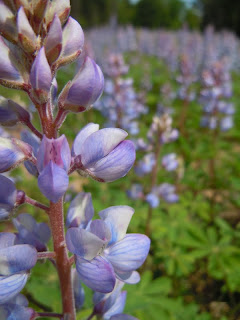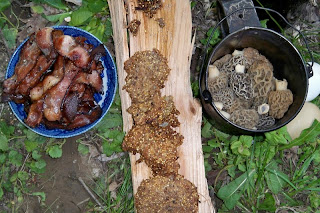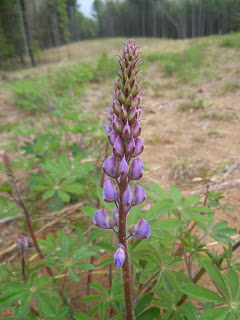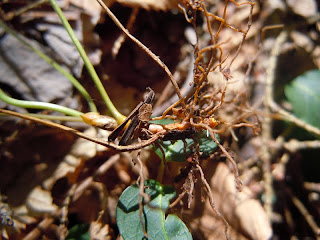I have so many pictures and have been spending a lot of time in the woods. Here are a few photos which I have selected. I wish that I had more time in the day to forage and blog, but, I must work sometimes. Enjoy!
A white violet
Serviceberry flower. I have recently been listening to Blackfoot Indian stories and the stories mention Serviceberries frequently. It's great that they grow way out West and here in the East as well.
I startled this squirrel and she tried to hide in a hole in this tree. Unfortunately for her, she was very pregnant and too fat to fit into the hole! She tried several times without success before she ran to the other side of the tree and yelled at me angrily. I think she was mad that I was laughing at her but how could I not laugh?
Dwarf Ginseng has an edible corm (I have not tried it yet)
new Red Maple leaves in the setting sun
I was out hunting and heard a rustle when I saw, only a few yards away, a turkey sitting underneath a tree. As soon as I saw her she flew away making a racket. I looked under the small white pine where she had been sitting and found a beautiful little nest. I saw here there again today so fortunately she has not abandoned it - although it is in a heavily trafficked area, only a few yards from where I sighted in my gun a week ago. There were 10 eggs in the nest.
Anyone who was truly hungry would be fortunate to find a nest like this. As it is, Turkey eggs are illegal to take unless the nest has been abandoned. I would love to eat wild Turkey eggs.
Spicebush flowers in May
Christmas Fern "fiddleheads"
Mmm... millipede?

Sensitive Fern
These beautiful red "fiddleheads" are good to eat. The Haudenosaunee Indians ate them in the springtime. Like most ferns, they do contain a small amount of carcinogens, however, if you cook them they are fairly harmless. The mature ferns contain more toxins and have been accused of poisoning horses.
My great-grandmother called "fiddleheads" break-greens. You could call these break-reds I suppose. She (Helen Cramer) was an amazing woman who foraged to feed her family. She may have picked Ostrich Fern fiddleheads - but I know for sure that she used Bracken Ferns. Bracken fiddleheads are very delicious, however, they absorb heavy metals from the soil so you need to be careful where you harvest them, and eat them in moderation.
My husband and I very much enjoyed a pile of Sensitive Fern break-reds (they loose their color when you cook them). They taste a bit like asparagus, spinach and mustard greens. A little butter, salt and pepper and you are in for a treat!
Sensitive Fern is sometimes called Beaded Fern due to the fact that the fertile fronds (pictured above) appear to be beaded.
Another view of Bloodroot - after the flowers have turned into seed packets.
Bitter Dock. This also is an edible plant, although Curly Dock is much more palatable. It is related to (and sometimes mistaken for) Rhubarb.
Cattail shoot. When you pull the shoot from it's base you get a tender vegetable which is sometimes called Cossack Asparagus.
The edible part of the Cattail shoots
Steamed Cossack Asparagus. I prefer it raw, as it has a rather slimy texture once it is cooked. It can be used quite effectively to thicken soup.
I hope that you are inspired to try munching on some Cattail shoots - please, don't mistake them for irises or Blue Flags, both of which are quite poisonous. Oh, wish me luck turkey hunting - I missed a beautiful Tom on Tuesday and have been spotting them since then but have not had a good shot. It is a challenge indeed, and my calling skills are not quite sufficient as of yet. I am having a really wonderful time hunting, though, for turkeys (skawerowane') as well as plants.



































































